Lenovo ThinkStation P620 Review: A Vehicle for Threadripper Pro
by Dr. Ian Cutress on February 16, 2021 9:30 AM ESTVisual Inspection
As with most workstations designed for under-the-desk operation, due to the need to power a big CPU and a big GPU (or two), the ThinkStation P620 is a sizeable machine, but smaller than you might think. The comparative dimensions are actually significantly smaller than my own personal Corsair Graphite 760T main gaming system: the P620 is 33.4 liters, while the 760T is 78 liters, more than double. A fully laden system has a max configuration of 24 kg, or 53 lbs.
Inside this P620 chassis Lenovo has effectively put in its own custom ATX motherboard. The initial aspect of how custom it is can be seen in the sense that it has a connector for a a special custom 1000W 80 PLUS Platinum power supply. The power supply has no output cables, and this makes the whole design a lot nicer and cleaner to manage – no cables travelling up the rear of the design, making the whole unit thinner.
The power supply connects through a single custom finger that looks like this:
By having a power supply like this, it provides power for the CPU, the motherboard, and the PCIe slots directly. The motherboard has to be engineered to manage all this power, so we’re likely looking at a 14-layer or 16-layer board, compared to the 6-8 layer regular motherboards that we see.
For the items that do need cables, like add-in cards and 2.5-inch/3.5-inch drives, Lenovo uses output ports on the edge of the system, where a traditional motherboard has SATA connectors, and from these the system can power the usual graphics cards ports.
It should be noted that in this SATA port area, even though there is a full PCIe x16 slot, it looks like you can’t fit a full GPU in here. This area isn’t for GPUs, but more for add-in cards.
There are six PCIe 4.0 slots, in a x16/x8/x16/x16/x16/x8 configuration. The preferred slot for the first GPU is the third slot, as shown in the picture above. A second GPU is supposed to go into the first slot at the top, and then any add-in cards (such as M.2 combo cards or additional Ethernet) are meant to go in the bottom two slots.
On the left of the PCIe, Lenovo has not only built a tool-less PCIe latch system, but it’s a one-finger design. Someone is super smart at Lenovo, as this no doubt helps with building the system as well as maintenance and repairs. Again, this is something that every system needs to have.
On the right hand side, Lenovo has an entry fan that can be removed very easily. Built into this housing is a rigid connector implementation, to help with holding up heavy graphics cards. Every system needs this.
At the top of the system, we have the socket area. The power delivery for the socket would appear to be split to the left and to the right, with two smaller copper heatsinks. This design you imagine might not be sufficient cooling for the power delivery on a 280 W CPU, but Lenovo has designed the unit for baffled airflow, and at this top area of the chassis is cooled mostly by the super interesting CPU cooler.
This uses what looks akin to 10 heatpipes (or five long ones) split into two batches of fins, each with its own fan, drawing air from the front of the chassis and pumping it out the rear. You might think this cooler looks a lot like the dual tower stacks available on consumer systems, but these two are at different heights, Perhaps this small design change enables a little more of the Bernoulli airflow affect to take hold, increasing the effective cooling. At any rate, this cooler is sturdy and does the job. I believe it to be a custom Foxconn design for Lenovo, and so alas not available at retail.
On the memory side of things, there are four slots above and below the socket. The processor supports eight channel memory, so we have one slot per channel here. Our system only came with two memory modules from Lenovo, but we filled the system with eight. One of the great things about this unit is the quad-channel memory fan bracket that Lenovo has put on both sets of four. These fan units are sturdily built, with a really nice spring retention mechanism. When systems like this have 64 GB of memory per slot, even at DDR4-3200, they can start using enough power that active cooling is a positive thing to have.
On the back of the system we have the audio outputs on the far left, just a simple 2.1 Realtek ALC462 codec here because nothing more is really needed on a compute system. There is space for a COM port (optional add-on), two PS/2 ports, two USB 2.0 ports, four USB 3.2 10 Gbps ports, and a 10 gigabit Ethernet port powered by an Aquantia AQC107.
The front panel houses the DVD-RW if that option is selected, a 15-in-1 card reader (if selected), the power button, a 3.5mm audio jack, two USB 3.2 10 Gbps Type-A ports, and two USB 3.2 10 Gbps Type-C ports. One of the Type-A ports is an always-on port. There is also a four-digit POST sequencer to help debug any start-up issues.
Overall, what I like about Lenovo workstations like this is that there are a number of unique little add-ons that only a large OEM like Lenovo can provide, and I wish these add-ons were more ubiquitous:
- A one output zero-cable power supply
- Tool-less Fan cages removable with one-two fingers
- Tool-less PCIe retention mechanism built into the chassis
- Tool-less PCIe removal bracket also useable with one-two fingers
- DRAM fan brackets (significantly better than what most/all DRAM vendors offer)
From this, Lenovo’s design gets a gold star from me. This also leads into the system level tests.



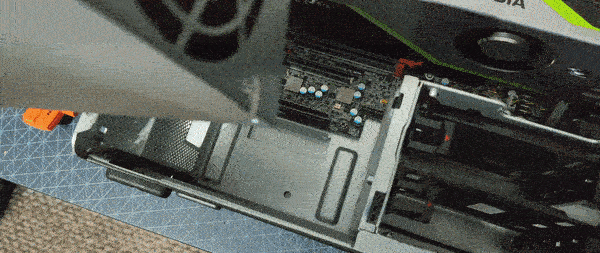
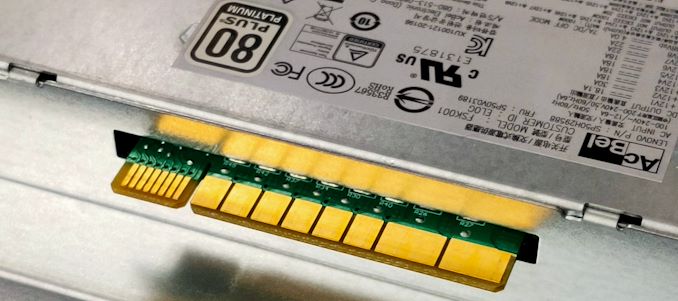
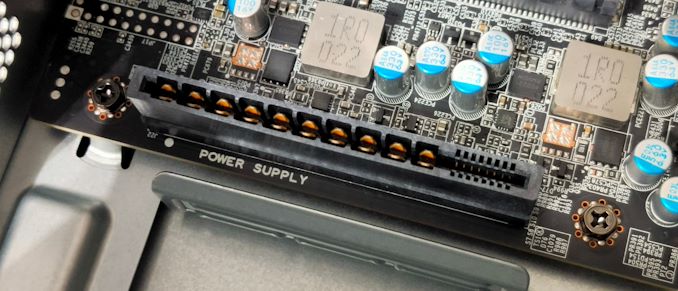
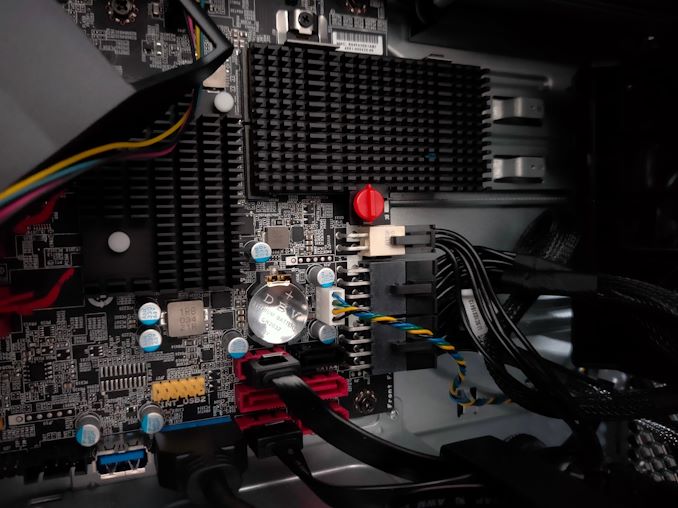


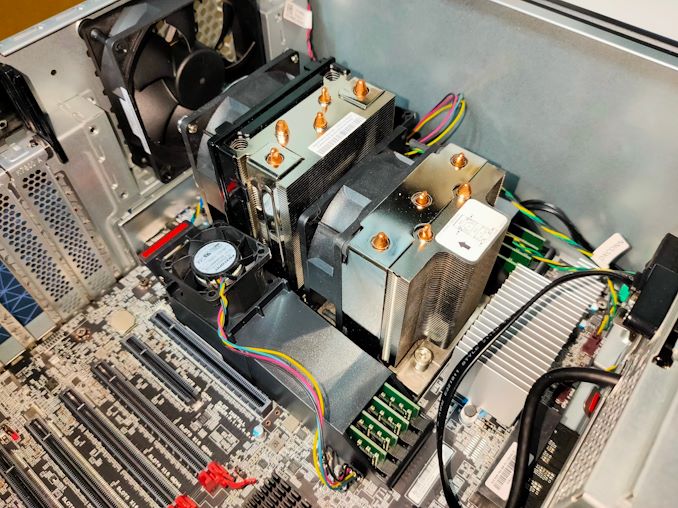
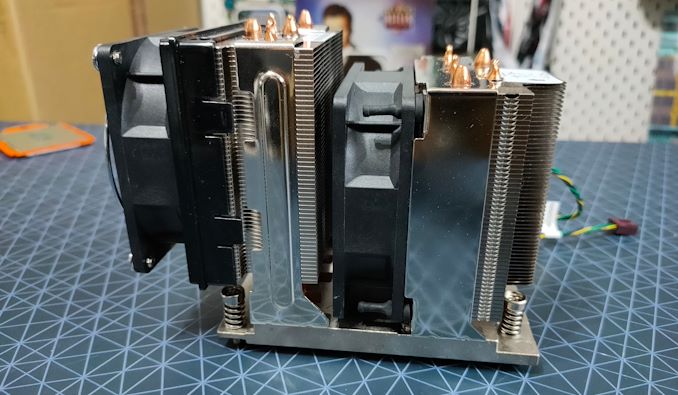

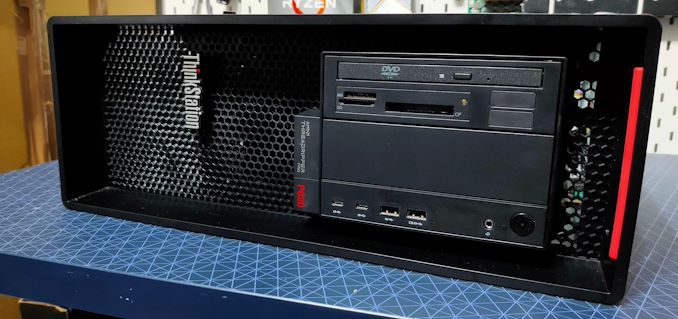








47 Comments
View All Comments
Billy Tallis - Tuesday, February 16, 2021 - link
Since Lenovo offers extended warranties out to five years for surprisingly low prices, it's reasonable to assume they'll be able to provide compatible replacement PSUs for at least five years past when they stop selling this machine. That's long enough to make this a non-issue in a corporate environment, even if it may hurt the secondhand market for these machines.Calin - Wednesday, February 17, 2021 - link
People that pay $20,000 for such a workstation will replace it in a couple of years with something better. However good this Threadripper Pro workstation is, five years from now it will be a dog (well, at least compared to another $20,000 workstation).I don't really see this level of performance being enough for more than about 3-4 years, and a well designed power supply will certainly last more than that.
DanNeely - Tuesday, February 16, 2021 - link
I think I've only had 1 PSU fail in waranty over a dozenish self built PSUs over 20 years. The failure wasn't with the AC-DC hardware but the pins on the modular interface to attach one of one of the PCIe cables getting pushed into the PSU and no longer making contact.Other than that every PSU I've owned has lasted at least 7 (or more recently 10) years before failing. Most of them were in environments of 24/7 full CPU/GPU loads from distributed computing. Granted I don't buy cheap PSUs (at high continious load gold/platinum models increased efficiency actually does pay for itself over the life of the PSU). OTOH I doubt Lenovo is using low quality units in systems this expensive either.
Calin - Wednesday, February 17, 2021 - link
While you might buy very good quality PSUs, in such flagship workstations Lenovo will put only the best power supplies money can buyHul8 - Tuesday, February 16, 2021 - link
Really appreciate the rickrolling in these recent TR Pro articles. Always brings a smile.Smell This - Tuesday, February 16, 2021 - link
I asked for the base ThinkStation P620 Tower Workstation (xxxx FH00) and pulled the trigger ... my CC only has a $1,800 limit so Martin at Lenovo RTP hooked me up to the interest-free payment plan. LOL Suckers. HA! (j/k)
Configuration Details
● Processor: AMD Ryzen™ Threadripper™ PRO 3945WX Processor (4.0 GHz, up to 4.30 GHz Max Boost, 12 Cores, 24 Threads, 64 MB Cache)
● Operating System: Windows 10 Pro 64
● Memory: 32 GB DDR4 3200MHz RDIMM ECC (2 x 16 GB)
● Hard Drive: 512 GB M.2 Gen 3 PCIe SSD, OPAL
● Graphics: NVIDIA® Quadro® P2200 5GB
● Optical Drive: DVD-RW
● Form Factor: Tower
● 1000W Fixed 92% Autosensing, 80 PLUS Platinum qualified
● Network Card: Integrated Ethernet
● Key lock: Key Lock Kit w/ Common Key
● Keyboard: USB Traditional - US English
● Pointing Device: USB Optical Mouse
● Memory Card Reader: 15 in 1 Card Reader
● 4Y Premier Support Upgrade from 3Y Onsite
The 4-year support upgrade was a condition of the financing. The onboard 10 GbE is the Marvell AQtion AQN-107. The Quadro® P2200 5GB was a nice bump but no NV link.
The 32 GB DDR4 3200MHz RDIMM ECC (2 x 16 GB) would appear to be the minimum. Didn't leap at the PCIe 4.0 NVMe 'upgrade.' I've used Lenovo keyboards before -- they're solid but maybe a little 'mushy' (not a great typist, anyway)
Grand total: $2,423.18 with NC sales tax, shipped to my door -- gave me an additional $1,000 credit with $100-off on my next purchase.
Smell This - Tuesday, February 16, 2021 - link
Link
https://www.lenovo.com/us/en/think-workstations/th...
bobsmith1492 - Tuesday, February 16, 2021 - link
Very nice. You can customize and add 8 channels of RAM. I've been planning a Threadripper build and their configuration with the recent coupon is pretty reasonably priced compared to a custom build.Smell This - Tuesday, February 16, 2021 - link
I'm hoping a standard modular GPU cable(s) will work!
I'm thinking Rendering/Encoding with GPU compute in Vegas may not need the umphh of that 8-channels of RAM but we shall see. Maybe 4-channel 4x16GB could be a nice compromise.
It may be of benefit using scratch drives in Adobe, but I try to avoid the big "A" for the most part. I'm heading toward a down-clocked RX Vega 56, or even a Fury on AMD Radeon Pro software, depending upon that Quadro P2200.
TanelPoder - Tuesday, February 16, 2021 - link
It’s an excellent machine. Thanks to the 128 PCIe lanes, 4 PCIe root complexes and 8 memory channels, I got over 11M IOPS and 66 GiB/s scanning rate out of it (I used 10x Samsung 980 PRO SSDs with quad PCIe-M.2 adapters) for it.For anyone interested, here’s an article about it:
https://tanelpoder.com/posts/11m-iops-with-10-ssds...